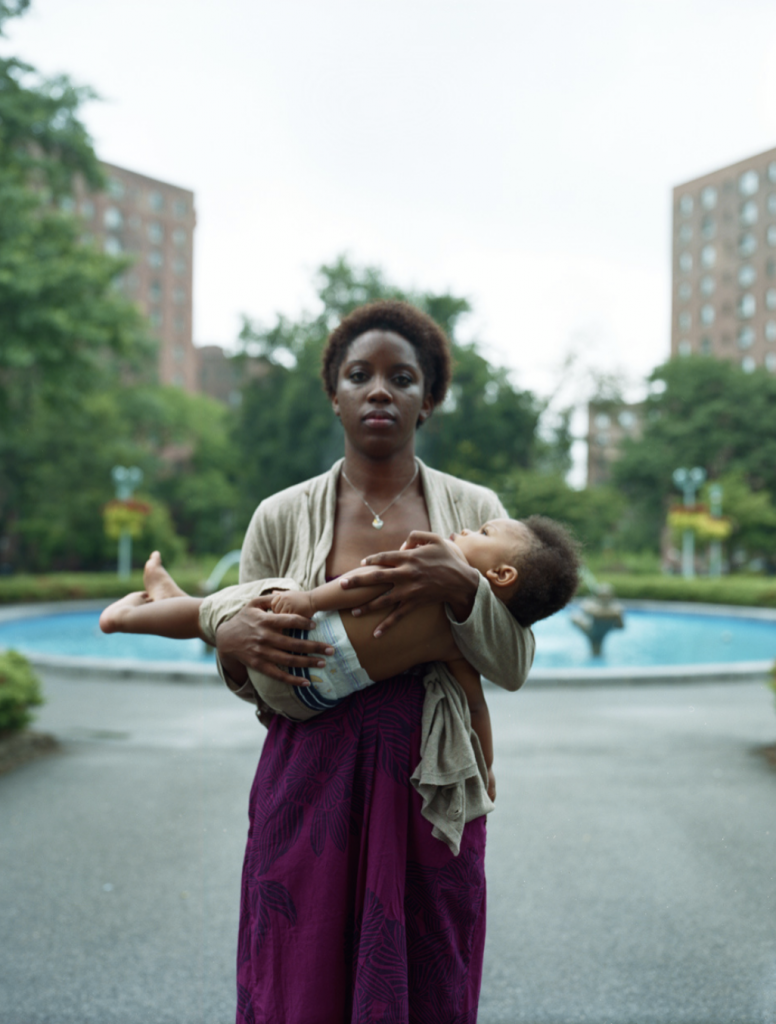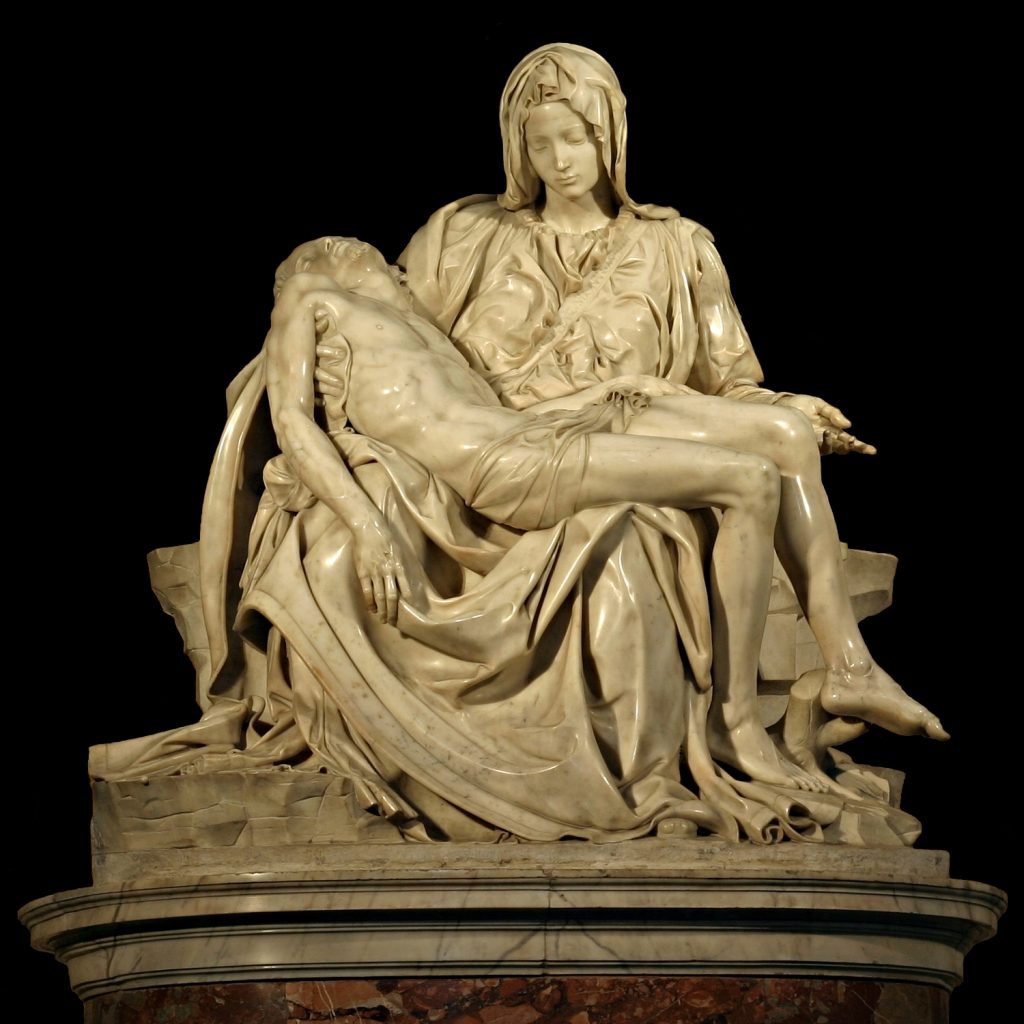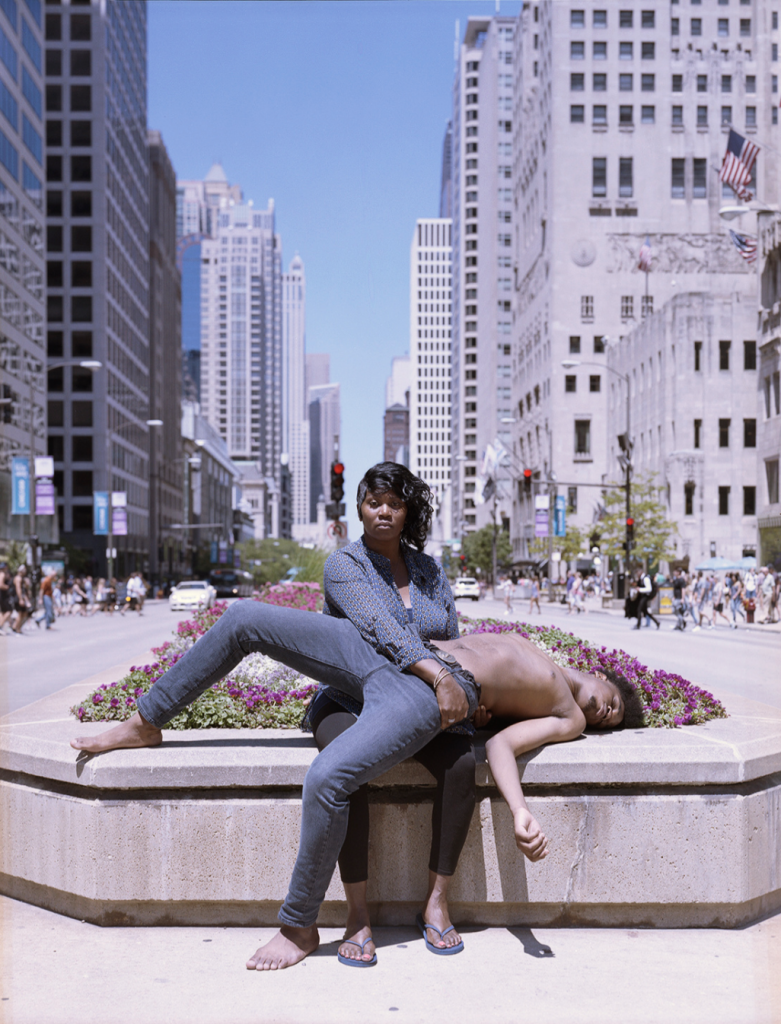Michelangelo’s Pietà is one of the most famous artworks of the Renaissance era. The marble sculpture depicts the Virgin Mary holding the body of her son, Jesus Christ, after his crucifixion. Michelangelo’s sculpture is the most famous of many Christian works of art known as pietà (“piety”; “compassion”), all of which depict the Virgin Mary cradling her dead son. The pose has been much-imitated in sculptural works, paintings, and most recently, as reimagined by Jon Henry.

Jon Henry’s Untitled #5
Parkchester, NY
Michelangelo’s Pietà, 1498-1499 
Jon Henry’s Untitled #19
Magnificent Mile, IL
Jon Henry is an NYC-based visual artist who works with photography and text. His art “reflects on family, sociopolitical issues, grief, trauma, and healing within the African American community”. His most recent photography collection, “Stranger Fruit“, visually plays homage to the Pietà while its name evokes the song, “Strange Fruit” (1939), whose lyrics reference the bodies of lynched Black Americans.
In Henry’s “Stranger Fruit”, many of the photographs depict Black mothers across America (Little Rock, Chicago, Harlem, Los Angeles, Birmingham, Miami…), with their sons lying prostrate in their arms or on the ground at their feet, as though dead. The mothers are photographed staring at the camera, their expressions stoic and hollowed with grief. In other photographs, the mothers are depicted alone, turned away from the camera and staring off into the distance, lost in the weight of Black motherhood and the terrible burden they may someday have to bear.
“Stranger Fruit was created in response to the senseless murders of black men across the nation by police violence. Even with smart phones and dash cams recording the actions, more lives get cut short due to unnecessary and excessive violence.
Who is next? Me? My brother? My friends? How do we protect these men?
Lost in the furor of media coverage, lawsuits and protests is the plight of the mother. Who, regardless of the legal outcome, must carry on without her child.
I set out to photograph mothers with their sons in their environment, reenacting what it must feel like to endure this pain. The mothers in the photographs have not lost their sons, but understand the reality, that this could happen to their family. The mother is also photographed in isolation, reflecting on the absence. When the trials are over, the protesters have gone home and the news cameras gone, it is the mother left. Left to mourn, to survive.
The title of the project is a reference to the song “Strange Fruit.” Instead of black bodies hanging from the Poplar Tree, these fruits of our families, our communities, are being killed in the street.”
Jon Henry, Artist Statement
Stranger Fruit is powerful and striking, especially on public display in the same streets where so many people have protested for Black lives and racial justice. Although these mothers have not lost their sons, it’s frightfully easy to imagine that someday they might. Their sons could be the next Trayvon, Ahmaud, Tamir, Philando. Their daughters could be the next Breonna, Aiyana, Tanisha. In our unjust world, the fruit of their wombs could one day become strange fruits.
Read more about Jon Henry and “Stranger Fruit.”
- Jon Henry Website
- Jon Henry on Instagram (@whoisdamaster)
- Q & A: Jon Henry on His Series “Stranger Fruit” (The Intrepid Camera)
- How Many Pietàs? (Sojourn Art)
- Jon Henry’s Strange Fruit: The Women Who Must Endure the Senseless Loss And Carry On (Then There Was Us)
- Stranger Fruit (ICP)